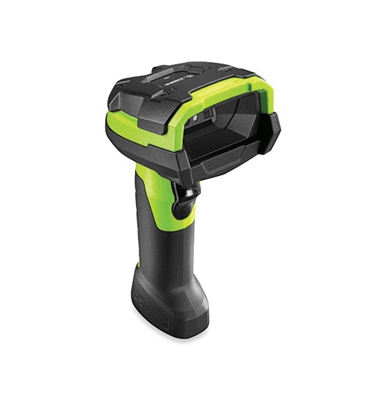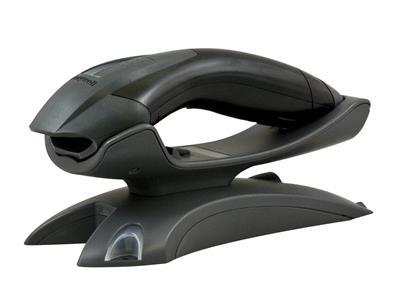How to choose your barcode Of barcodes?

To ensure the smooth running of your business, it is essential for you to properly ensure your logistics, inventory management as well as the management of the entry and exit of your goods. This is done with a traceability system, itself composed of several key tools, such as the scanner, which allows you to view the information of an item you have encoded in your database. This guide will provide you with elements to guide your choice among the multitude of existing models.
Barcode reader with PC connection or standalone terminal?

At first glance, you have the choice between two types of readers. Barcode readers connected to a PC and standalone terminals, also called PDAs.
The first ones are only used to read the barcodes and retransmit the data to a PC, which has a reading software that will allow to display them or to encode new ones.
The stand-alone terminals integrate a barcode reader directly into a small portable computer, whose size is adapted to manual use. Other functions are attached to it according to your needs. These types of devices are more sophisticated than simple scanners and should be used if your purpose is more than just reading barcodes.
Here we will expand on your selection options for simple scanners.
Barcode scanners with and without cables?
Depending on your applications, you may have to move around with your scanner because the items you are responsible for are difficult to move or your work area is large. Do you work in a storage warehouse, are you a department manager in a supermarket or a member of the nursing staff in a hospital and need to view patient information? Then you should choose a wireless handheld reader.
On the other hand, if you have a fixed job where the items to be scanned come to you, such as on an automatic line, a supermarket checkout or even any retail counter, you would be better off with countertop models. Among these you might even want to consider hands-free scanners, which will give you much more freedom of movement, should you need both hands.
In the warehouse area, it is also possible to install a barcode reading station on your clarks. You have mount terminals on your clarks.
Reading 1D or 2D
1D barcodes are represented by a series of parallel black bars and a series of numbers. This is what we usually think of when we hear the word barcode. These can contain a small amount of data, which your reader will extract.

Two dimensional (2D) barcodes are barcodes that represent data in a matrix of contrasting cells. The most common is the QR code, which is heavily used for advertising and marketing. However, 2D barcodes can be used for much more. Unlike 1D, 2D barcodes can hold data vertically and horizontally, allowing for much more information to be stored. Inc, 2D barcodes can hold 2000 characters or more. They are also capable of creating links to websites, can be used for product tracking, product identification, and more.
Other benefits of 2D barcodes
- Ability to scan the barcode in all directions. This makes scanning faster and more efficient.
- One scan is enough to collect all the information. 2D barcodes can fill several fields at once, but 1D barcodes require several scans. This is especially advantageous when working in a warehouse, where hundreds of scans are performed every day.
- 2D scanners have the ability to reduce the use of counterfeit items, improving supply chain tracking. This is because 2D barcodes can contain much more information than 1D barcodes, making products more difficult to counterfeit.
2D barcodes are widely used in Healthcare, marketing and logistics, especially with inventory or mobile terminals.
Reading distance
In large spaces like warehouses, some of your barcodes may be up high, or at least some distance away from you without you being able to move close enough to read it.
So you'll want to get long distance barcode scanners which will allow you to read barcodes that are too far away from you. This will improve the efficiency of your logistics team by reducing the amount of travel required to read barcodes.
Ruggedized barcode scanners.

Depending on the working conditions you face, not all barcode scanners will be suitable.
- Do you work at heights on platforms or ladders? You are exposing yourself and your barcode scanner to fall hazards.
- You work in an environment where there is a lot of liquid or with a high level of humidity Your reader risks drowning.
- You work in an environment where there is a lot of dust? These can infiltrate through the joints of your device and damage it irreversibly.
- You work in material handling and you are subjected to a fast pace of work? You may not have time to gently place your barcode scanner.
- Do you work in a warehouse with heavy vehicle traffic? Your barcode scanner may be crushed.
In all these working conditions (not an exhaustive list), you would be well advised to opt for ruggedized scanners, more resistant to shocks, falls and with high waterproof ratings that will protect them from immersion, splashes and dust of any kind.
Our suppliers, Zebra and Datalogic, provide a range of high-quality rugged scanners with all the options you'll need for your work environment and applications.
Special case: the hands-free handheld terminal
This is not a simple type of barcode scanner but a complete handheld terminal that does not monopolize your hands. We still draw your attention to it because the singularity of these small reading terminals can be a choice asset depending on your sector.
Some activities require you to carry out specific operations with both hands, which from the point of view of using a scanner or a terminal does not always make things easier. This portable terminal Zebra WS50 is there to overcome this problem.
This miniaturized terminal has been specially designed to be attached to your wrist, your fingers or the back of your hand. You can enjoy the full use of your hands while being able to perform all the operations you usually do with a portable terminal.










